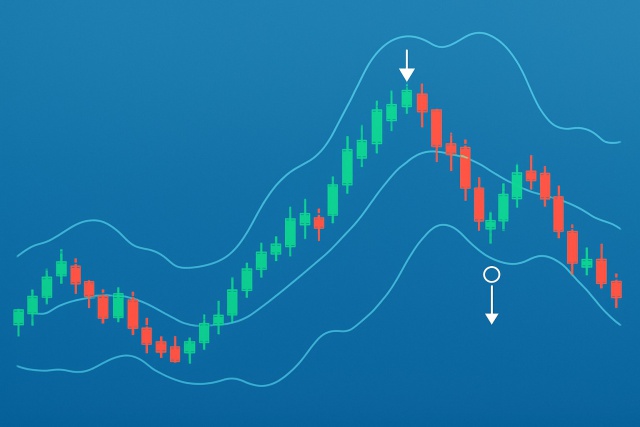
How To Build A Scalping Strategy That Works For You
Discover a practical guide to creating a scalping strategy that fits your trading goals and style, h...

Scalping trading strategy is a go-to for traders keen on cashing in on tiny price jitters by pulling off quick-fire trades. In markets that move at lightning speed where prices swing every which way, scalping really shines because it’s all about snapping up quick entries and making exits fast. These whirlwind markets demand a laser-focused mindset to ride out volatility and grab fleeting chances, which is exactly where scalping fits like a glove.
Scalping is a trading approach that involves executing a flurry of trades within very short time frames—usually just seconds to minutes—and aims to squeeze profits out of tiny price movements that might seem insignificant to the casual observer.
Scalping offers the advantage of earning quick profits while keeping your market exposure low, which helps limit risk on each individual trade. This approach works best in fast-moving markets where the price is constantly shifting, providing many opportunities to capture small gains. This style isn’t for the faint-hearted because it requires sharp discipline and lightning-fast decision-making along with tight stop losses to protect your capital. It is not easy and comes with risks like high transaction costs and the challenge of managing multiple trades without emotions interfering and causing problems.
Adjust your indicators by fine-tuning parameters to better keep up with the fast-moving market environment. For example, consider experimenting with shorter EMA periods like 9 or 12 and setting the RSI to 7 instead of the usual 14. Opt for chart types that refresh frequently such as tick or 1-minute charts to catch sneaky market swings more effectively. Platforms like Binance offer advanced trading tools and APIs for those who like to dive into algorithmic strategies. TradingView shines with highly customizable charts, a vast array of indicators and plenty of social trading options.
Set up your trading environment on a reliable low-latency platform like Binance—this helps make sure your orders fly through and you get real-time market data without a hitch.
Scout for potential entry points using short time-frame technical indicators like 1-minute EMAs and RSI signals which often line up nicely with volume spikes—kind of like catching the market just as it is catching its breath.
Make it a habit to set clear stop-loss and take-profit levels to keep losses in check and aim for steady small wins—a reward-to-risk ratio around 1:1 or 2:1 usually does the trick in my experience.
When your entry criteria light up, jump in quickly to seize those sharp price moves—no dilly-dallying because speed is the name of the game here.
Keep a hawk’s eye on your trades and don’t be shy about tweaking your stops to lock in profits if the momentum decides to stick around a bit longer.
Always have a well-thought-out exit plan ready to close positions once targets hit or if the market starts sending off warning signals—this way you avoid those pesky unnecessary losses.
Keeping discipline is absolutely key when you are deep into those fast scalping sessions. Try not to fall into the trap of chasing trades or letting your emotions hijack your decision-making—I’ve seen it trip up even the best. Whenever you can, lean on automated alerts or limit orders since they’re great for keeping things objective and taking some of the heat off your shoulders. Also, don’t underestimate the power of stepping away now and then.

A trader monitoring multiple charts and volume indicators for scalping in fast markets.
Tackle these hiccups by trying trading platforms like Binance or TradingView. They usually deliver snappy execution speeds and solid connections that help keep slippage and delays at bay. When the mental fog starts creeping in, don’t forget to take regular breaks and set up some handy automated alerts because they’re a lifesaver for reigning in screen fatigue.
Sticking to these best practices can really help sharpen your consistency and boost profitability when implementing a scalping trading strategy in fast-moving markets. Keeping a tight handle on risk is essential because it acts like a safety net that keeps losses small and manageable. Riding the waves during times of good liquidity usually leads to smoother trade execution and better price efficiency, which is a win in my book. Jotting things down in a trading journal is a lifesaver. It helps you review trades with a clear head and keeps your emotions in check, which is an important part of fine-tuning your strategy.
Struggling to improve your trading performance? Edgewonk's advanced analytics tools are designed to give you the edge you need.
With detailed trade journaling, robust strategy analysis, and psychological insights, you'll gain a comprehensive understanding of your strengths and weaknesses. Don't miss out on this game-changing opportunity.
Traders, it's time to elevate your game. Edgewonk is the ultimate trading journal software designed to empower you with data-driven insights and personalized strategies. Take control of your trading journey and maximize your potential.
27 articles published
With 20 years experience in commodity trading, Jasper provides insights into energy markets, precious metals, and agricultural futures with a focus on macroeconomic trends.
Read Posts
Discover a practical guide to creating a scalping strategy that fits your trading goals and style, h...

Master the art of risk control in momentum trading. Discover step-by-step strategies to safeguard yo...

Master trading with Bollinger Bands by understanding volatility, setup patterns, and risk management...

Unlock the full potential of TrendSpider with this authoritative guide to TrendSpider University tra...
